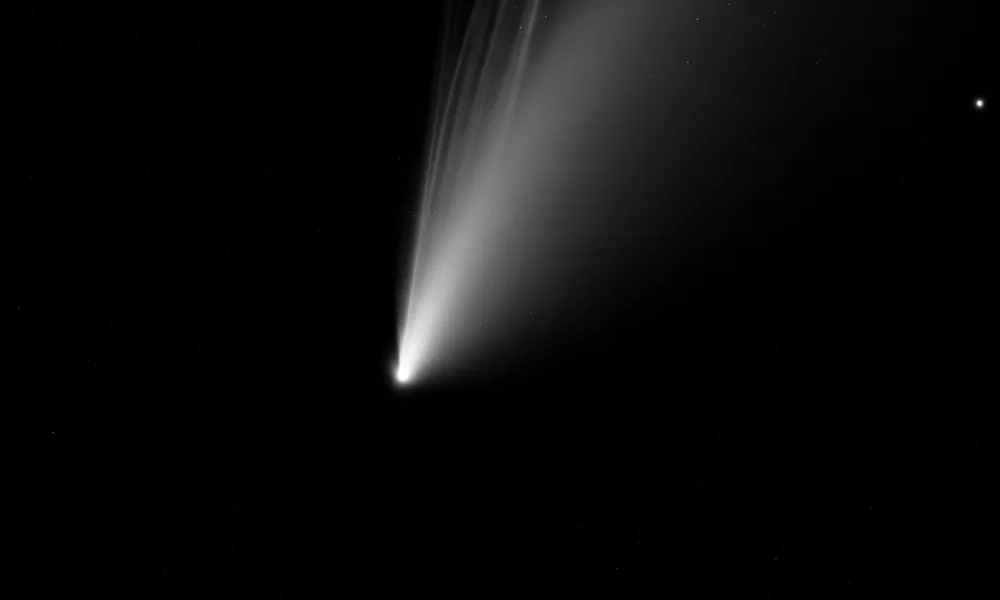Harvard astrophysicist Avi Loeb, head of the Galileo Project, has suggested that a discovery made in July could be evidence of a “monitoring device” sent by an interstellar visitor.
High above us, a newly observed comet is drawing attention for its unusual characteristics. While some astronomers see these as typical phenomena of interstellar objects, Loeb disagrees. He believes there is a 30-40% chance the object is not naturally formed, leaving open the possibility of artificial origins.
What NASA Hasn’t Shown
Loeb, who leads Harvard’s Galileo Project, a scientific initiative dedicated to systematically searching for extraterrestrial technological artefacts, told the Joe Rogan Podcast that NASA has not released an image of the interstellar comet 3I/ATLAS, allegedly captured near Mars earlier this month.
The comet, first detected in July, was reportedly recorded by the HiRISE camera aboard the Mars Reconnaissance Orbiter on October 2, yet the snapshot “was never published.”
According to International Business Times, the missing image could point to “a non-typical natural process or even a mechanical source,” Loeb said. He added that the small asteroid 2025 PN7, currently orbiting Earth temporarily, may be an artificial object linked to 3I/ATLAS, functioning as its “mothership.”
In his words: “Imagine an advanced civilisation placing a baby monitor in our solar system to watch us, the way we watch infants in a crib.”
Controversy and Silence
Loeb said he requested access to all relevant NASA data but has received no response. There has been no official comment confirming whether any hidden images exist. His remarks have reignited online debate about the possibility of extraterrestrial intelligence.
He noted that 3I/ATLAS is the third confirmed interstellar object after ‘Oumuamua and 2I/Borisov, and could be 10,000 to 100,000 times more massive than ‘Oumuamua - a figure that, he said, does not align with conventional comet models.
Spectroscopic data from observation teams detected nickel with little or no iron in the object’s emissions. Loeb suggested that this composition resembles industrial alloys used in aerospace materials, though other scientists, including Karen Meech and Alan Fitzsimmons, argue these results can be explained by natural chemistry. He also pointed out that the comet lacks a classic tail, instead displaying an elongated glow, which he described as potentially “industrial in composition.”
The Scientific Divide
While many astronomers have dismissed Loeb’s theory, he maintains that potential technological signatures in space should be explored rather than rejected. For now, both NASA and the European Space Agency continue to describe 3I/ATLAS as a natural interstellar comet, with no verified evidence of artificial origin.
